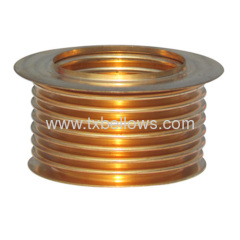|
K.G. (HK) Co., Ltd.
|
valve spring
| Place of Origin: | Zhejiang, China (Mainland) |
|
|
|
| Add to My Favorites | |
| HiSupplier Escrow |
Product Detail
valve spring
Concept
Racing engines often fail at high rotational speeds because mechanical springs are unable to retract the valves quickly enough to provide clearance for the piston. Renault's pneumatic valve technology replaced steel springs with light weight compressed air bellows. These could retract valves more quickly and reduce the possibility of piston-valve interference as long as pressure could be maintained. Additionally, the amount of seat tension required to keep a coil sprung valve under control results in greater peak lift loading, with added stress to the entire valvetrain as a result. Pneumatic systems, sharing a common reservoir of pressure retain a more static level of force, controlling the valve effectively, without any attendant peak lift load increase.
[edit] Pneumatic valve technology in racing
Pneumatic valve springs gave Renault an advantage with its turbocharged engines, often said to be the most powerful. However, reliability and poor handling of their chassis kept the cars from success until 1989 when Renault provided Williams with its V10 engine to begin a winning streak. Renault won the constructors' championship with Williams in 1992, 1993, 1994, 1996 and 1997, and with Benetton in 1995. Nigel Mansell, Alain Prost, Michael Schumacher, Damon Hill and Jacques Villeneuve each won a Driver's championship in the 1990s with Renault engines.
Pneumatic valve springs are also found in several Moto GP motorcycle engines, debuting in 2002 with the Aprilia RS3 Cube. In 2005, Team Roberts was the first to use pneumatic valves full time in their uncompetitive KTM powered bike. Today, almost all of the MotoGP teams use pneumatic valve technology on their bikes, including Yamaha, Kawasaki, and Suzuki. Honda only has one bike out of four that use pneumatic valves. Ducati uses a desmodromic design.
Related Search
Spring Check Valve
Spring Safety Valve
Brass Spring Check Valve
Spring Brake Valve
Spring Brass Check Valve
Spring
More>>







